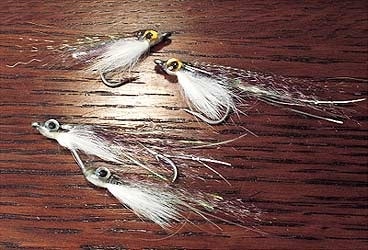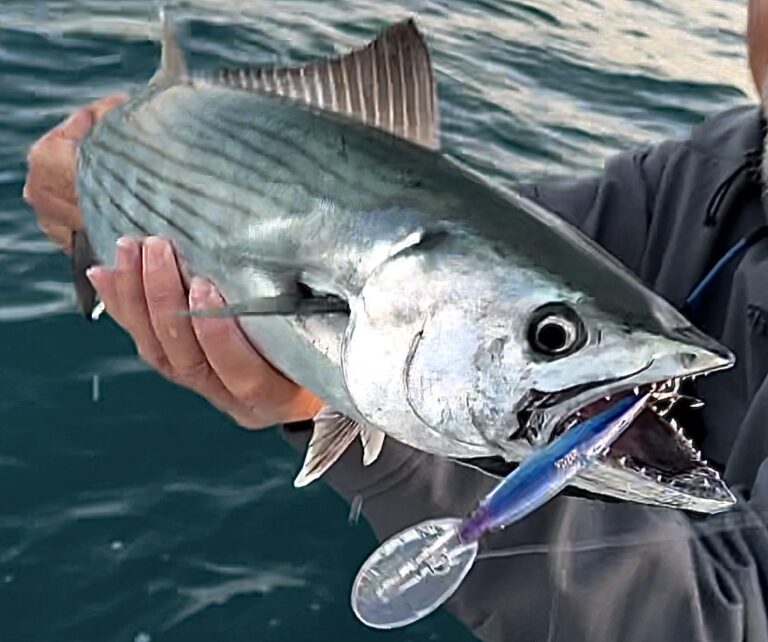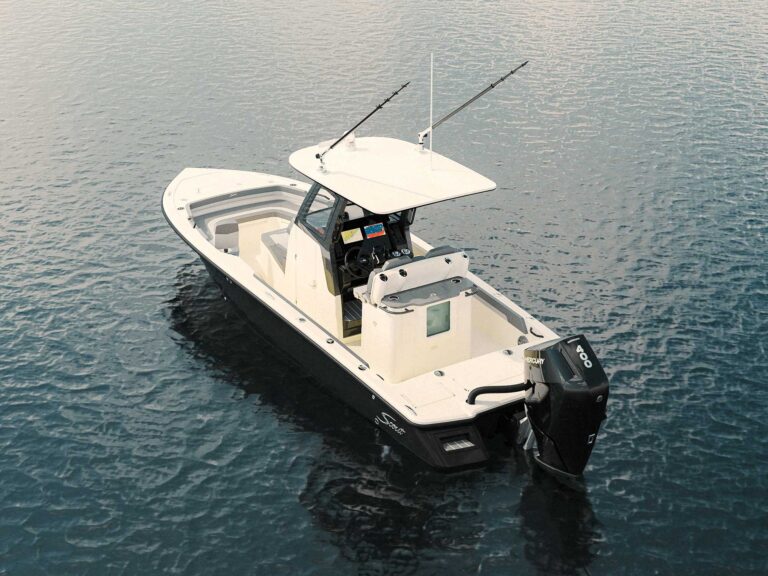
Anyone who has experienced a hookup with a tough false albacore needs no reminder of the excitement caused by blistering hundred-yard-plus runs from a fish who will fight doggedly until utter exhaustion sets in. And catching them is only half the fun. Part of the challenge to me, at least, is tying the flies that will fool these game fish.
You hear lots of tales about the keen eyesight and selectivity of the albacore. Those tales are only partly true in my experience. There are times when actively feeding fish will hit anything about the right size if you can just get it in front of them (easier said than done). There are other times, though, when they can be completely frustrating because of their finicky behavior.
One of my favorite flies for false albacore is the Bunny Belly Anchovy, a design meant to imitate the striped anchovy, Ameboa hepsetus. The idea for this fly came about in mid-September, as I spent a Saturday morning casting blindly into a local breachway hoping for some fish to show. As I studied the water, I noticed some very small bait swimming a little deeper than the silversides that were the dominant forage fish that season. In the water they had a slightly reddish tinge, but they were nearly transparent except for the gut and eye.
I managed to snag one and I held it up to the sun for a fish’s eye view. Nearly half of the tiny fry disappeared into only a glimmer of translucence. No albacore showed that afternoon, but the little anchovy had provided a challenge for the vise that night. The fly I came up with is essentially a very sparse Ultra-Hair streamer with rabbit fur tied in layers under the hook shank for the belly.
I built the head large enough to accept a 2 1/2-mm stick-on eye and then gave it a final coat of epoxy to just beyond the eye. I wrapped the hook shank with wire to help it sink quickly to the depth of the bait. The result was a fly with a nice broad belly, a sparse top and a tapered end. Held up to a light, the dominant elements were the belly and eye.
The following Sunday I returned for the incoming tide. The silversides were all around and I was casting my trusty flat-tied Deceiver. I hooked up once at the mouth of the breachway while blind-casting about midmorning, and then things got quiet. Down by the bridge a kid started yelling. The tide had about gone slack and 10 albacore were going nuts right in front of the parking lot. A bunch of spin-casters had emerged from their cars and were bombarding the water with everything in the book.
The fish seemed to be hanging on the east side, so I crossed the bridge and took up station in some clear space just beyond the parking lot. These were actively feeding fish, but no one could manage a hookup. I had a couple of looks but no takes. I couldn’t believe the luxury of having the fish swimming in circles right in front of me for 10 minutes!
My slow mind finally clicked on … anchovies, of course.
I had to turn away from the action to tie on one of my creations from the night before, hands trembling from an adrenaline rush I can still feel. My normally shy and laid-back demeanor had by now been replaced by a fever to get the little 1-inch fly into the water. The fish were up tight to the bridge and had the little critters trapped in the eddies created by the now slowly moving tide and the bridge abutments. I walked right by six tightly packed spin-casters explaining I just had to give this fly a chance. They stepped aside, either from their own frustration or because they had picked up on the crazed look in my eyes.
The fly hit the water and with three twitches of the nearly stationary but sinking streamer I watched a nice albacore swoop on it. I was off and running down the jetty. The fish had nearly reached the tip when it paused, shook and I was off – having failed to set the hook.But the point had been made: This fly flat-out works when albacore are zoned in on small anchovies. Since that time, my little fly has gotten a bit bigger, say 1 1/2 to 2 inches long, and over the course of the fall season the fly produced consistently. As a bonus, the Bunny Belly Anchovy has proven a killer for bass, too, when they blitz the big schools of anchovies in mid-October.









